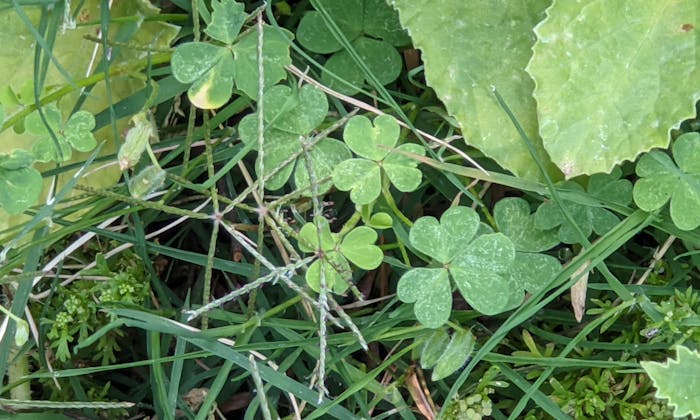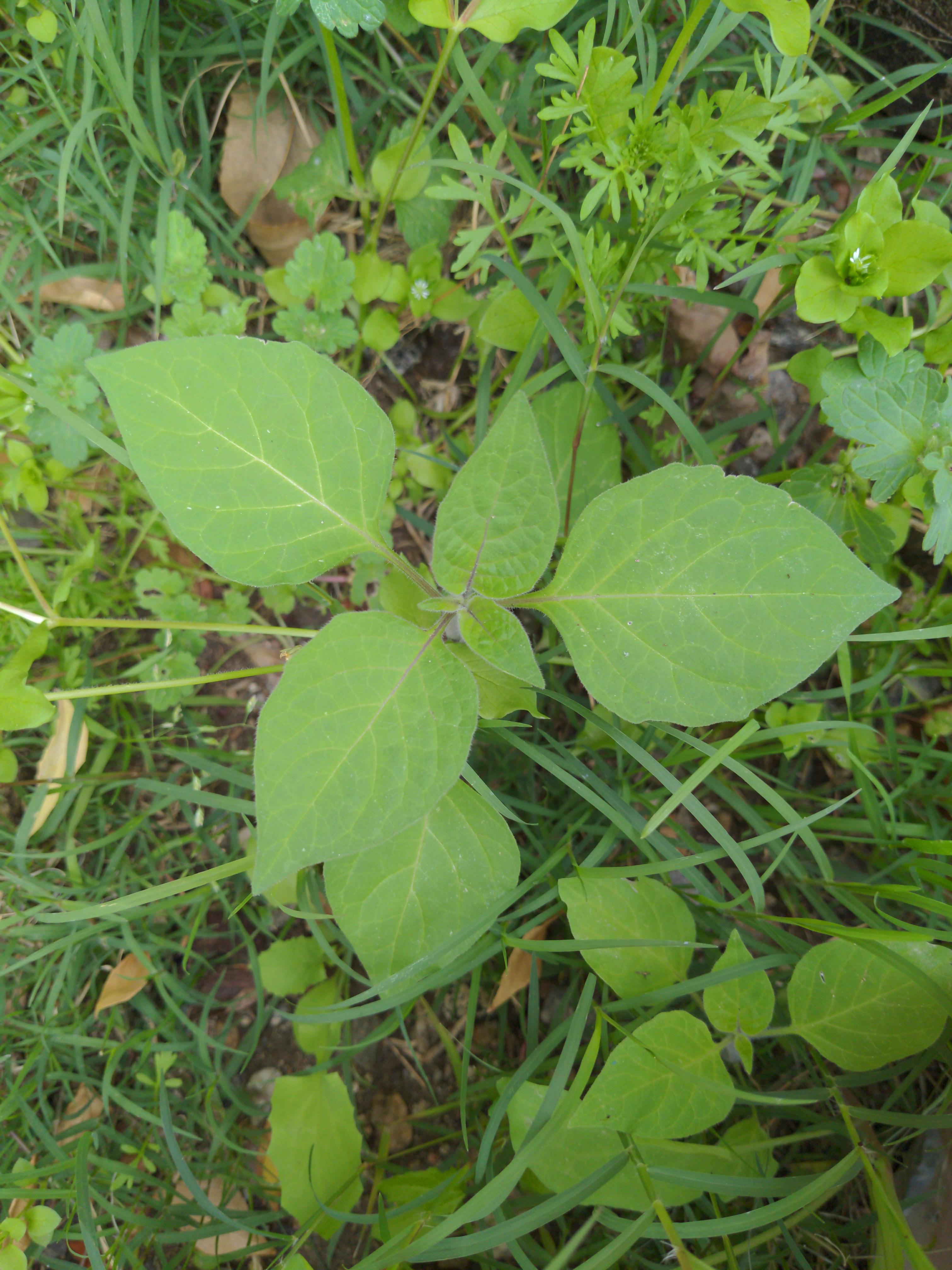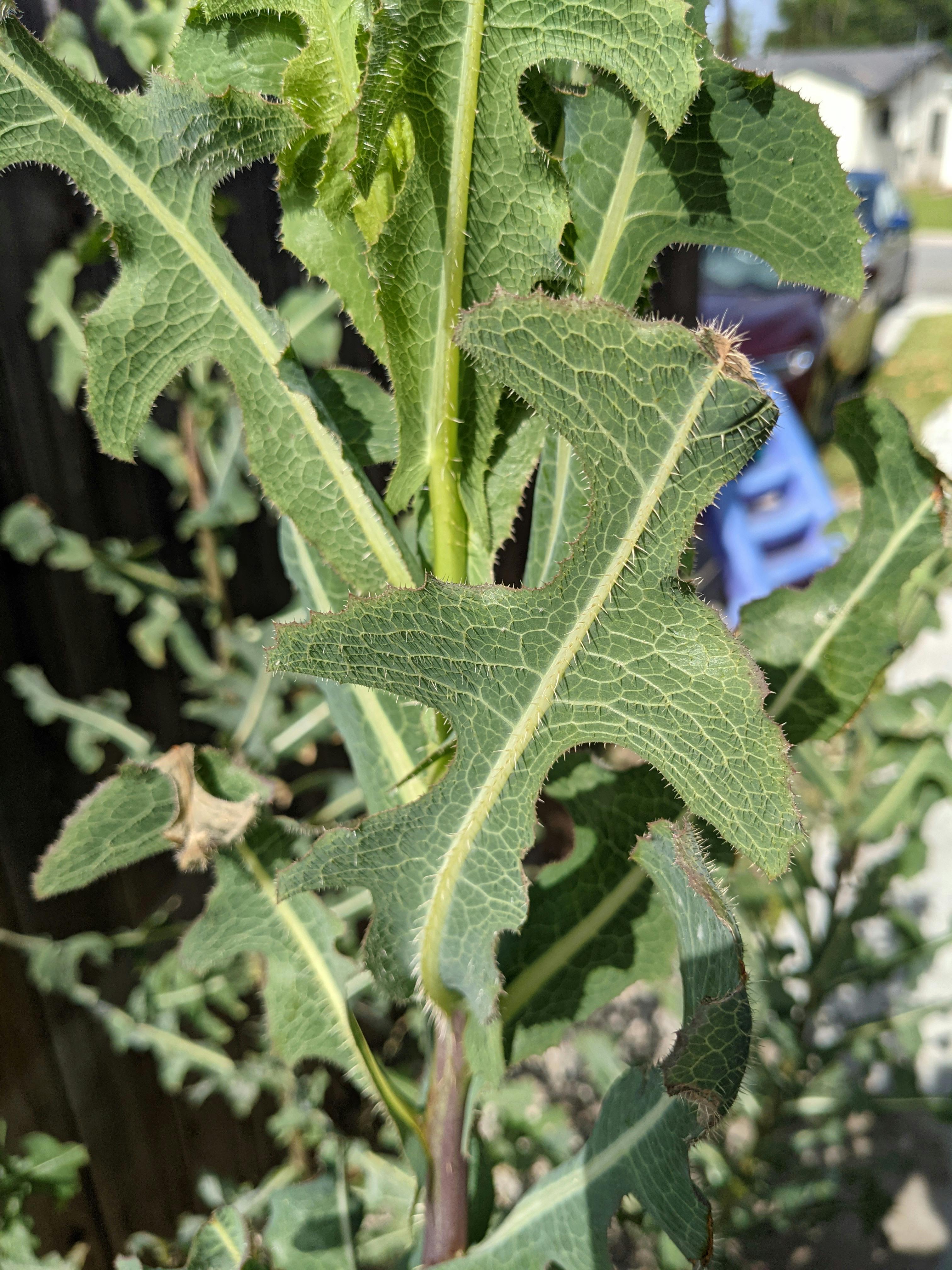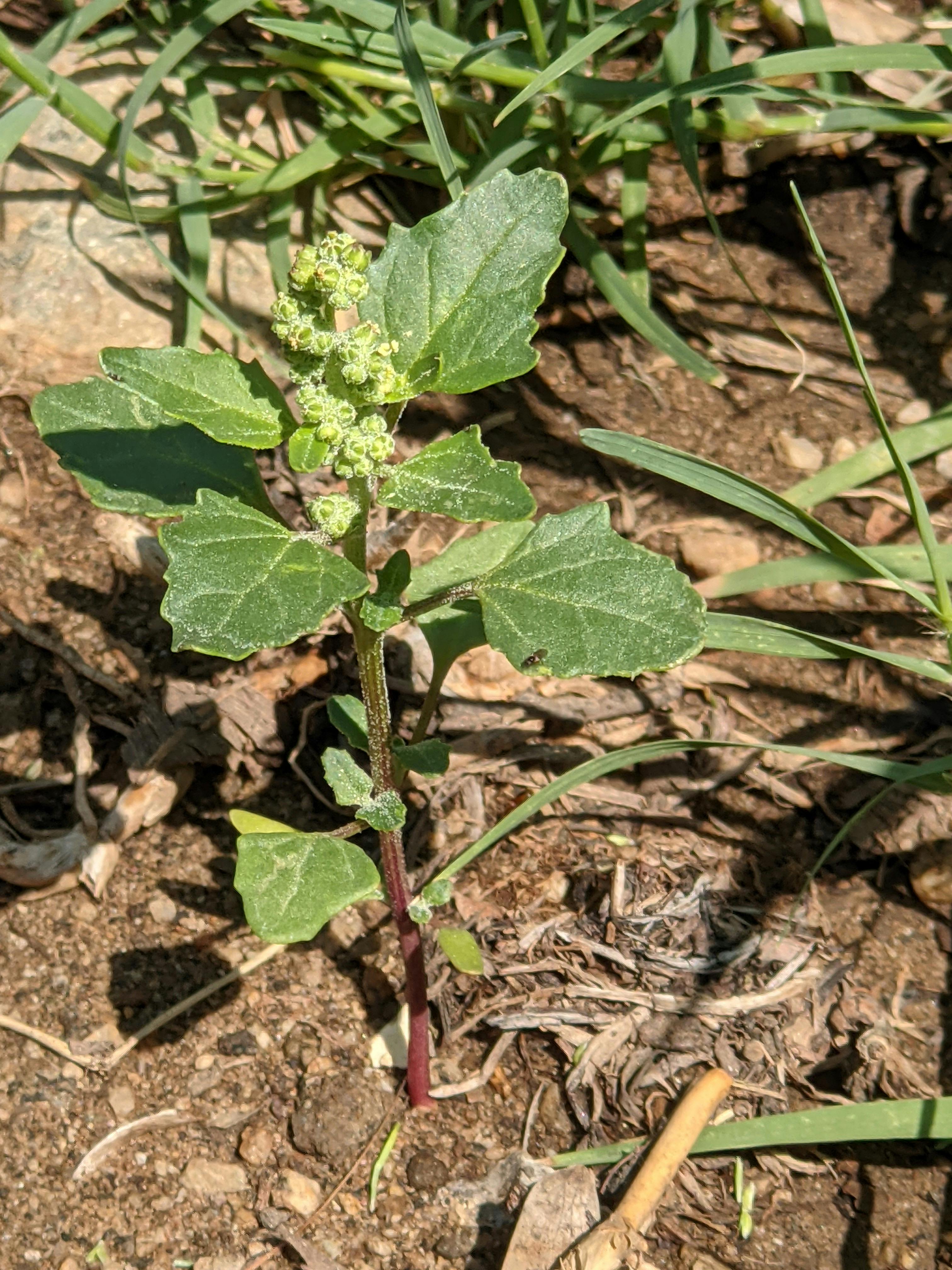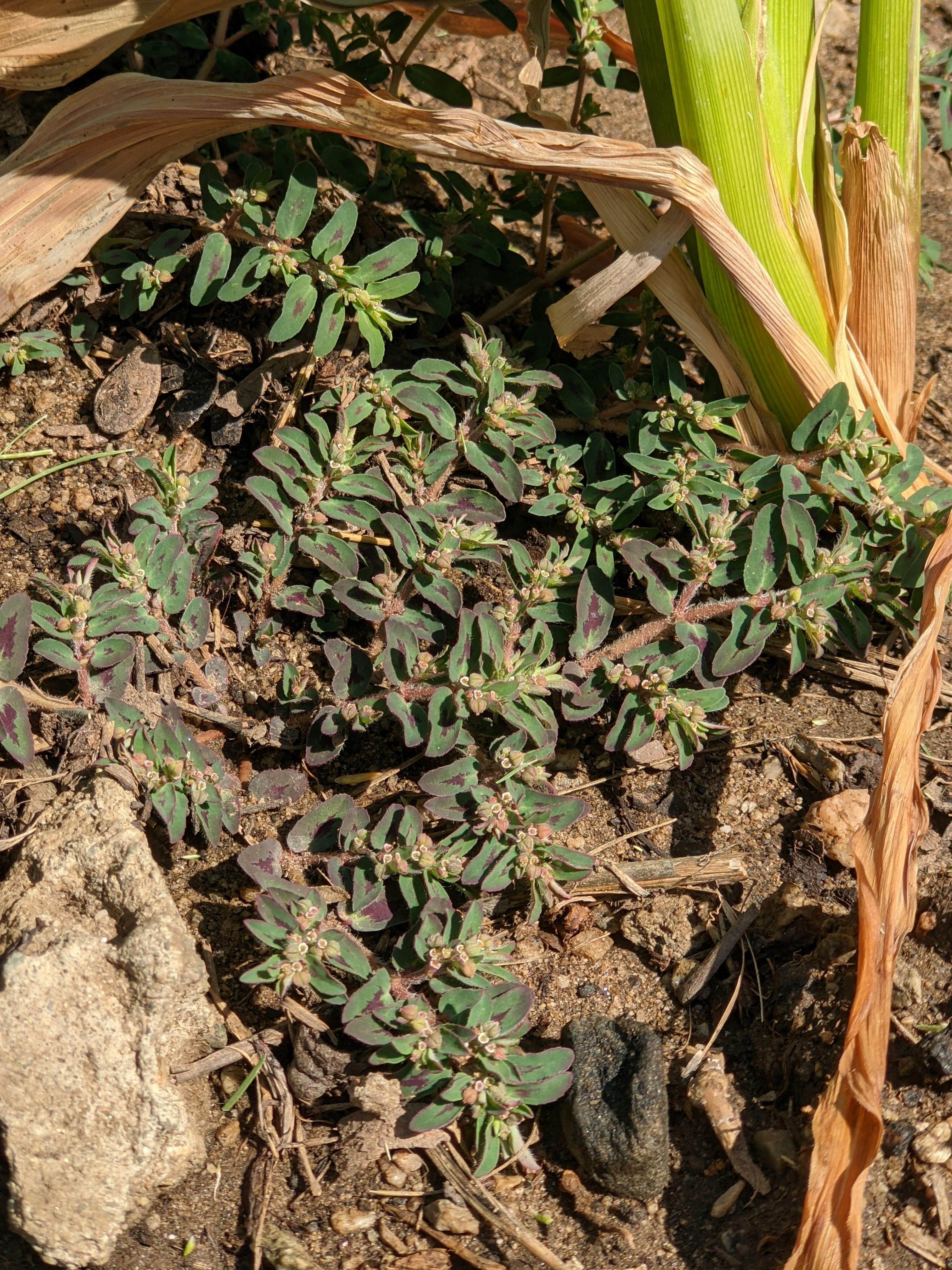Weeds aren't all bad!
I'm completely fascinated by the weeds I find around my house. I try to identify every new one I find.
The most widely accepted definition of a weed is a plant that you don't want that grows in your yard anyway. That's not a botanical definition and it may or may not include native plants and plants you have seeded that have spread beyond where you want them.
The depressing thing about all of these weeds is they are almost exclusively non-native, invasive plants. The one exception to this in my yard are my sunflowers, but I'm pretty sure those are only there because of the birdseed.
Invasive plants act like weeds with the added characteristic of not being from around here. Invasive plants do not contribute very much to the ecosystem they live in, and on the whole have a negative effect because they often crowd out and outcompete with natives. That is because they benefit from a lack of local predators to keep them under control. Some "alien" plants might be present but have roughly a neutral effect on their neighborhood so aren't really considered invasive, but aren't native either.
Weeds Aren't All Bad
In permaculture, weeds are not necessarily a bad thing. When I moved into my house in mid-August, a big section of my yard was hard, baked, dry clay with straw-like dry grass over the top.
Around the edges I had few plants growing. For example, there was fairly large castor bean plant, and a nopal cactus coming from one neighbors yard, and some blackberries, a vine I still haven't identified and an invasive "Tree of Heaven". In the various places where these plants were, there was actual soil. Soil that was alive, even damp, in dryest days of August.
Weeds can also be thought of as "pioneer plants". They move in wherever there is "disturbed soil", and they require very little in terms of water or nutrients. They start changing their environment to suit them, and in turn build the soil other plants can then come in to.
Common Weeds
Some of the weeds in my yard inspire a nostalgia. When I was a child growing up in Rancho Cucamonga, my friend and I would ride our bikes in fields of undeveloped housing lots. We'd charge through the thickets of dry grass and milkthistle and emerge with socks filled with sickers and foxtails, having to pick them all out one by one before putting them in to the wash.
The same weeds appear today in the more neglected parts of my yard, behind the garage, or in the side of the house where no one goes.
Here are some weeds you will probably find in your yard too.
American Black Nightshade
But I wouldn't trust any of it enough to risk my life on. Some say the toxicity depends on where you find it regionally, and also how much water it received as it was growing. The berries it produces are definitely toxic when green. Maybe less toxic when ripe and black. Birds love the plant.
I've had this plant grow aggresively around tomatoes. Maybe that was just a coincidence, but they blended in really well and for a while I thought it was my tomato plant thriving, but it turned out to be one of these! They were a lot more prolific in my yard in spring than in summer.
Common Sowthistle
This is one of those "familiar in childhood" species. One of a couple of different weeds we just called "dandeylions". Like true dandylions, they are part of the Asteraceae family (sunflower/daisy). The leaves are edible, but as the plant matures, the leaves become thicker and more bitter.
Milkthistle
If you allow them to grow, they will fairly quickly reach six or seven feet. They grow hollow and tall, and even when established, their shallow roots are easily liberated from the ground. However, they have some spines so you will want to use gloves and they also may snap before you get the taproot free.
Wood Sorrel (Oxalis)
Be very cautious attempting to identify something you are not already very familiar with if you are going to eat it. The sorrels are very common, edible weeds. The genus name Oxalis, refers to Oxalic acid, which is technically slightly toxic, but is perfectly safe in reasonable quantities. It gives it a sour, lemony flavor. Oxalic acid is also found in spinach and broccoli.
I've tasted these a few times in my yard. It usually has a dull, green-lettuce-like flavor. But I had some stowaways from Washington grow on my passion fruit that were very lemony!
Nettleleaf Goosefoot
Once in a while they might grow too close to a vegetable that I have planted, in this case I think it's important to pull out the plant while it is still young. If you wait to long, you might uproot the plant you want to keep! Nettleleaf Goosefoot is in the amaranth family and, like amaranth, is edible. There are some compounds in the plant that could be considered toxic, but it is generally considered edible. If you are concerned, you can cook it and destroy the toxins.
Spotted Sandmat
It's kind of a cute plant. As a spurge, it stays close to the ground. And it has those cool purple markings on it. It's not edible, and there are some warning out there about the sap being a skin irritant. The ones in my yard have never caused a problem for me, I frequently pull them up with my bare hands. Be forewarned in case you have a different reaction to yours. Not edible.
Morning Glory
Falls under the category of: I put this there, now I don't want it anymore. Morning Glory seeds are very easy to come by in large nurseries. They flower prolifically, every morning there is a new batch of flowers which usually fall off by the end of the day. Each of these flowers, in theory, can become a seed and eventually spread throughout your yard. The seeds are easily buried and tough, they might not emerge for some time after you've removed the parent plant.
When mine were mature, I decided to get rid of them and replace them with the native "Island Morning Glory" species. But they had been dropping seeds for months by that point, and anytime they receive some moisture a new one pops up. I don't worry about them too much though. They are easy to pick out and even when mature their root are easily pulled from the ground.
Bermuda Grass
If I could wipe the world of one plant, it would be Bermuda Grass. It is a super aggressive grower. It replicates and spreads itself by rhizome, segmentation and seed. And it takes over wherever it finds water.
The one thing Bermuda Grass dislikes is shade. My strategy to get rid of it was going to be to shade it out with other plants. I wanted to just grow as much as possible to let the plants outcompete the bermuda grass. This experiment showed some promise, but ultimately failed. The grass is just way to persistent.
In some parts of my yard I did lasagna mulch. The grass does appear through parts of this section, but is much easier to pull out. The soil under the mulch is softer and moist, and the grass is usually poorly rooted. It's along the borders of my yard and under plants where I can't reach that I have the worst problem.
Alternatively, I could have used weed killer all over the yard before I started planting. Glyphosate is supposed to break down quickly and ultimately be safe, but I don't want to have those chemicals in my yard where I grow food that I feed my family. I just don't have that much trust for the chemical companies that produce the stuff.
Another option is organic weed killer. You can buy a 20-30% solution of acetic acid. It's basically a highly concentrated version of kitchen vinegar. It very quickly breaks down in the sunlight so any soil acidification that happens is short lived. I've used it a couple of times to mixed results. It works by dyingout out the grass and any other plant it comes in contact with. It doesn't do anything to prevent new growth. And you have to be careful not to get it on any plants that you do care about.
Castor Bean Plant
My wife instantly recognized this one when we moved into our place. She remembers yanking it out of her aunt's house when she was a kid. The castor bean plant (Ricinus communis) is facinating because it creates the most toxic protein known, ricin, yet the plant is safe to be around. In fact, castor bean oil is a product that also comes from this plant. The plant has many medicinal uses, due to its anti-inflammatory properties. The plant is also grown decoratively in some places, such as public parks! The beans produce both the oil and the ricin.
Personally, I don't want the plant in my yard. It's not easy to get poisoned by it, but it is definitely possible. So it was one of the first invasive plants I removed. The one I took out had probably been growing for years, to the point where it had taken on a tree habit. It was a prolific seed producer. I had to chop it up, then dig a big hole around it and yank it out. Now I get thousands of babies growing whereever I water. Fortunately, they pull out quite easily.
Tree of Heaven
At first I was confused by the idea of a tree being called a weed. It's not like you walk out into your yard one day and there's a twenty foot tree you never saw there before. Then I encountered the "Tree of Heaven". If you look over my fence into my neighbor's yard, you can see another Tree of Heaven. If you look further, another, and another, forming a long line.
They are not at all beneficial to their environment. Birds mostly avoid them, although I saw them occasionally go in to the tree, there just isn't much there it can offer them. Not much shelter, no food. And they are allelopathic, meaning they prevent most types of plants from growing underneath them. I actually noticed this problem myself when I first tried to plant around this tree. I tried a few herbs and annual flowers, that all died very quickly. I can't prove it was the Tree of Heaven murdering these seedlings, but I'm convinced.
Eventually I chopped down my "Tree of Heaven". I wasn't able to get the whole thing though, the trunk is too thick and deep for me to get rid of. Someday I will hire a tree company to finish the job. In the meantime it continues to throw out sprouts from its stump. And worse than that, it sends out runners that have appeared in my garden beds. Just this weekend, I found two two-foot trees growing in the side of my yard. I couldn't believe I hadn't caught these sooner, but it is that sneaky of a plant! Fortunately, with it's rapid growth rate, it isn't able to put in the energy to build roots right away, and it was easy to yank out by hand still, even at that size.
Fig Tree (Ficus carica)
My fig tree isn't a weed, but I recently learned that figs trees can definitely be considered weeds which is why I wanted to mention it here. It's pretty harmless to have them in my yard since I am close to any protected woodland area. And figs serve my permaculture goals. They are loved by many species of birds.
Unfortunately, it doesn't take long to spot a fig tree our nearby mountain woods. There they can be quite harmful. They become very bushy and can easily crowd out the native flora. They also love water and respirate a lot, so they can actually drain our precious streams, adding stress to our already depleated water reserves.
Conclusion
That isn't a fully comprehensive list, but I hope it was enough to gave you another perspective on the weeds in your yard. Exploring what's out there and what new plant shows up uninvited can actually be fun sometimes!

